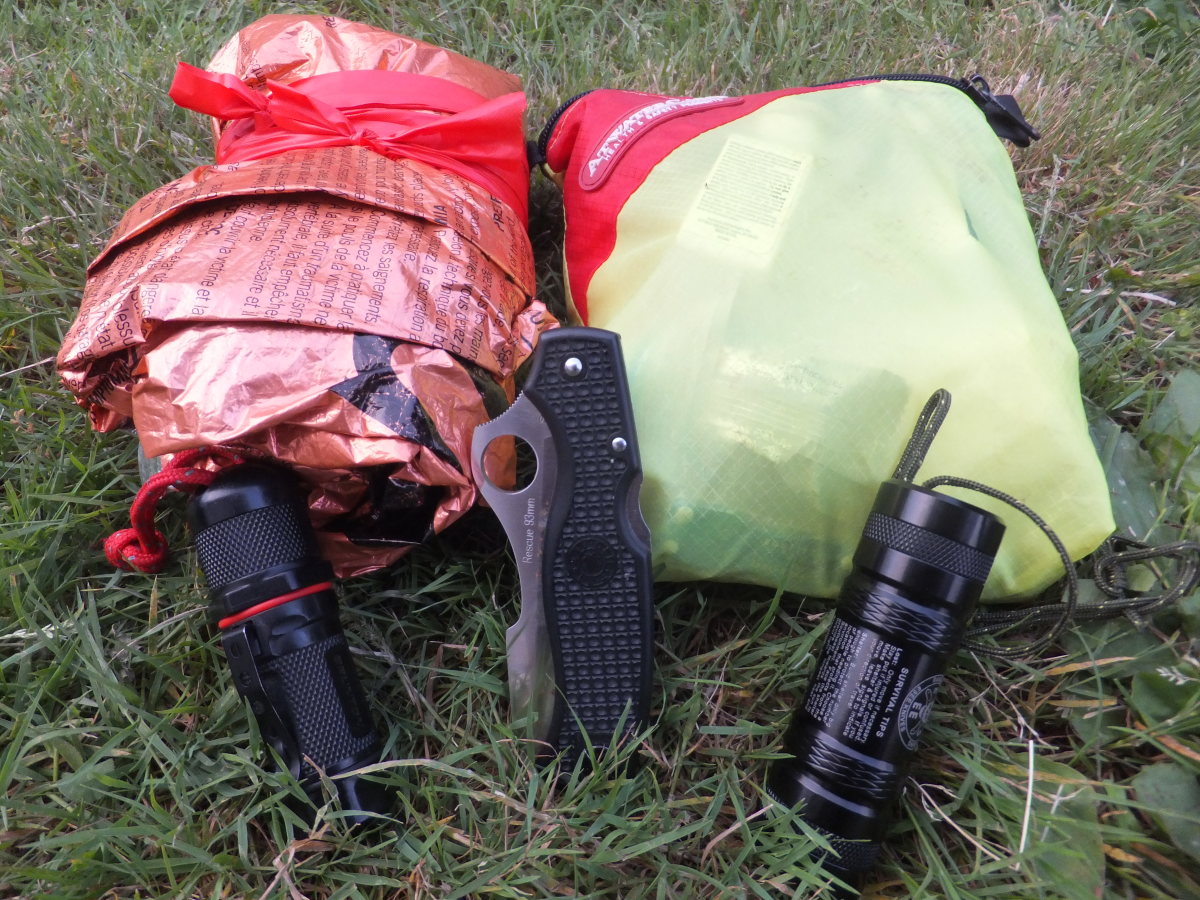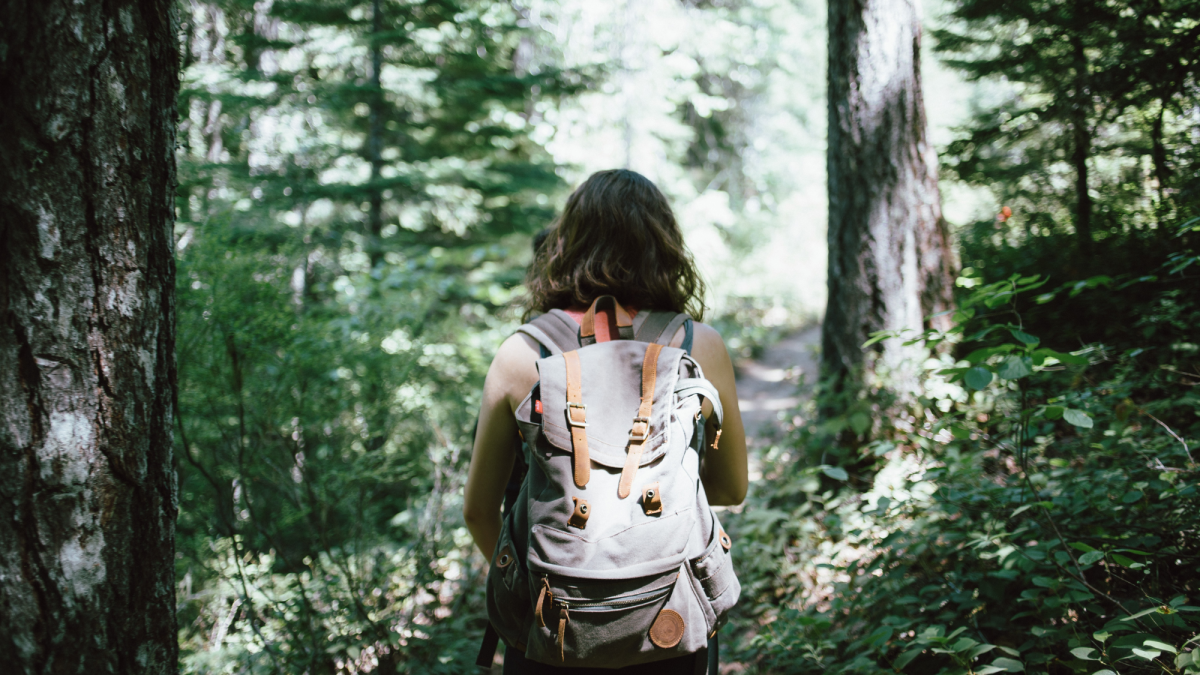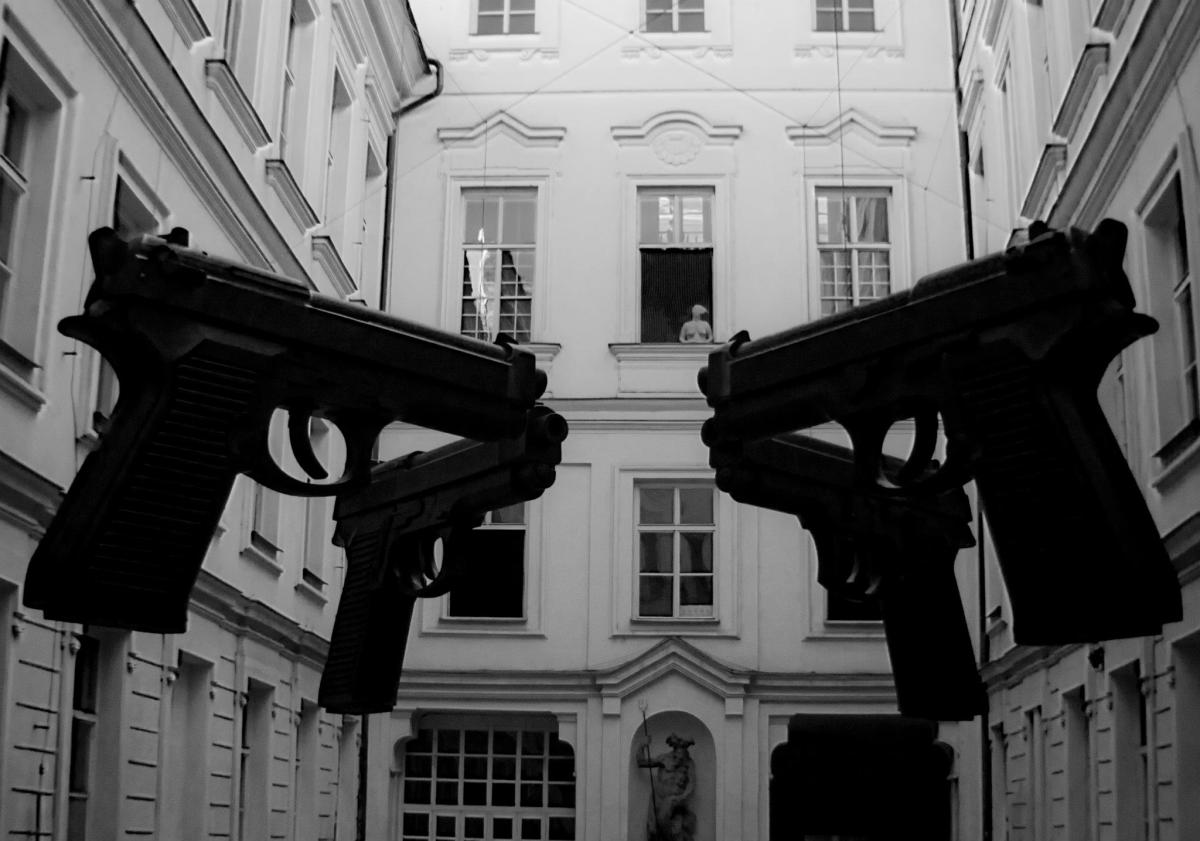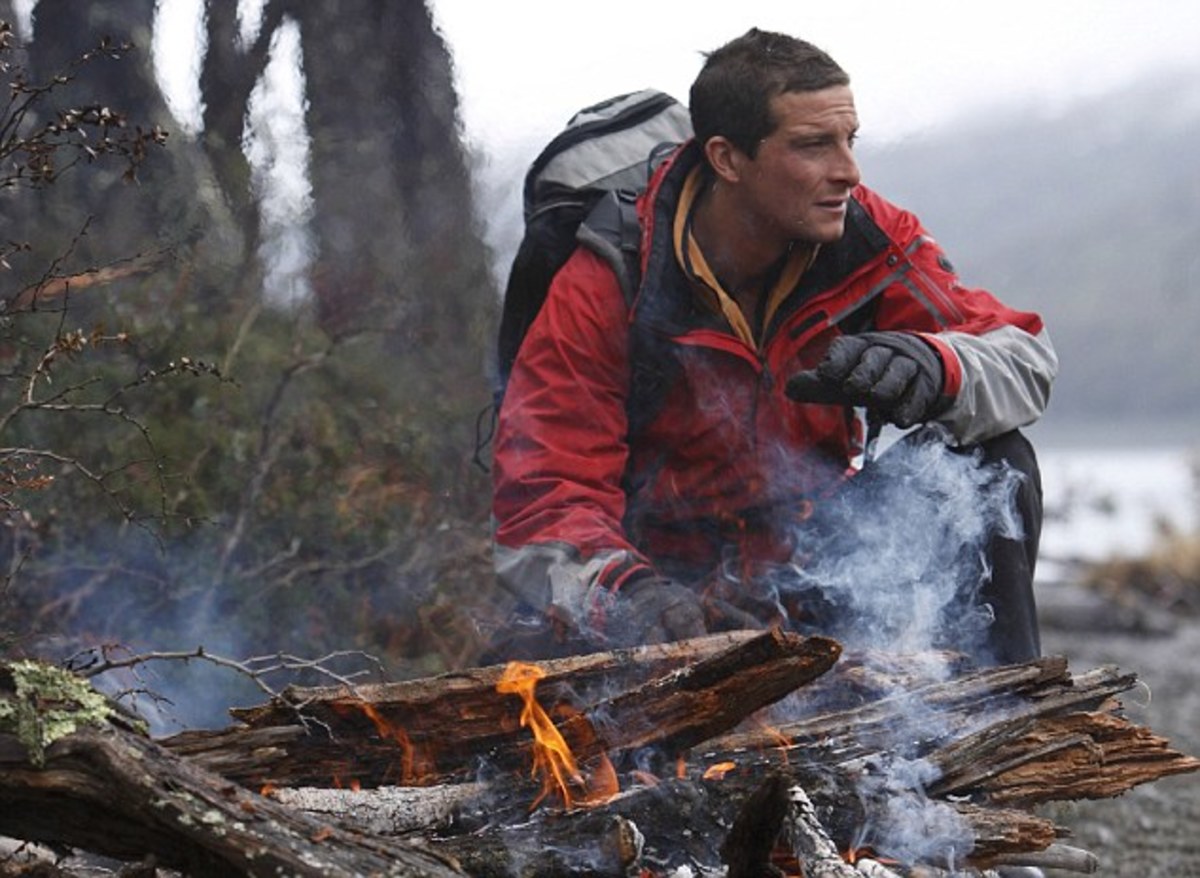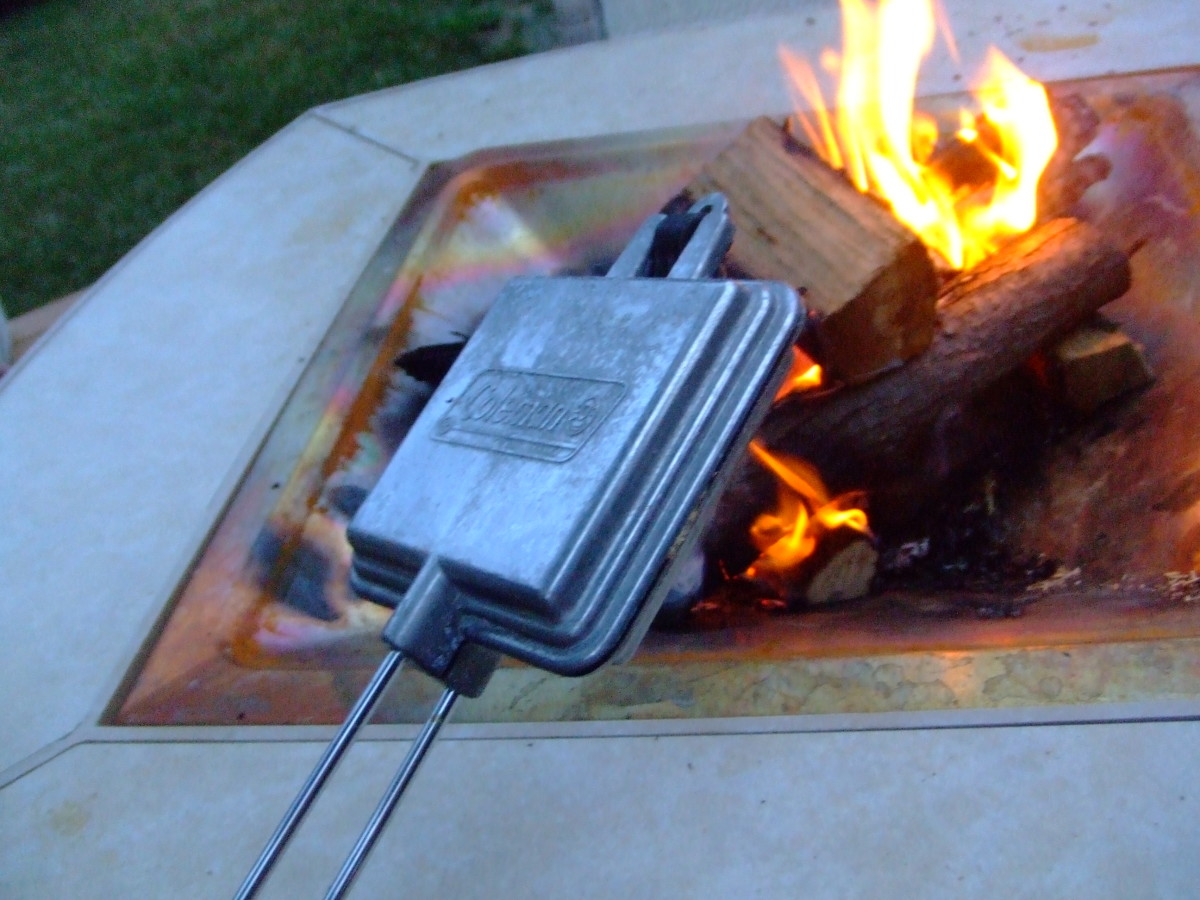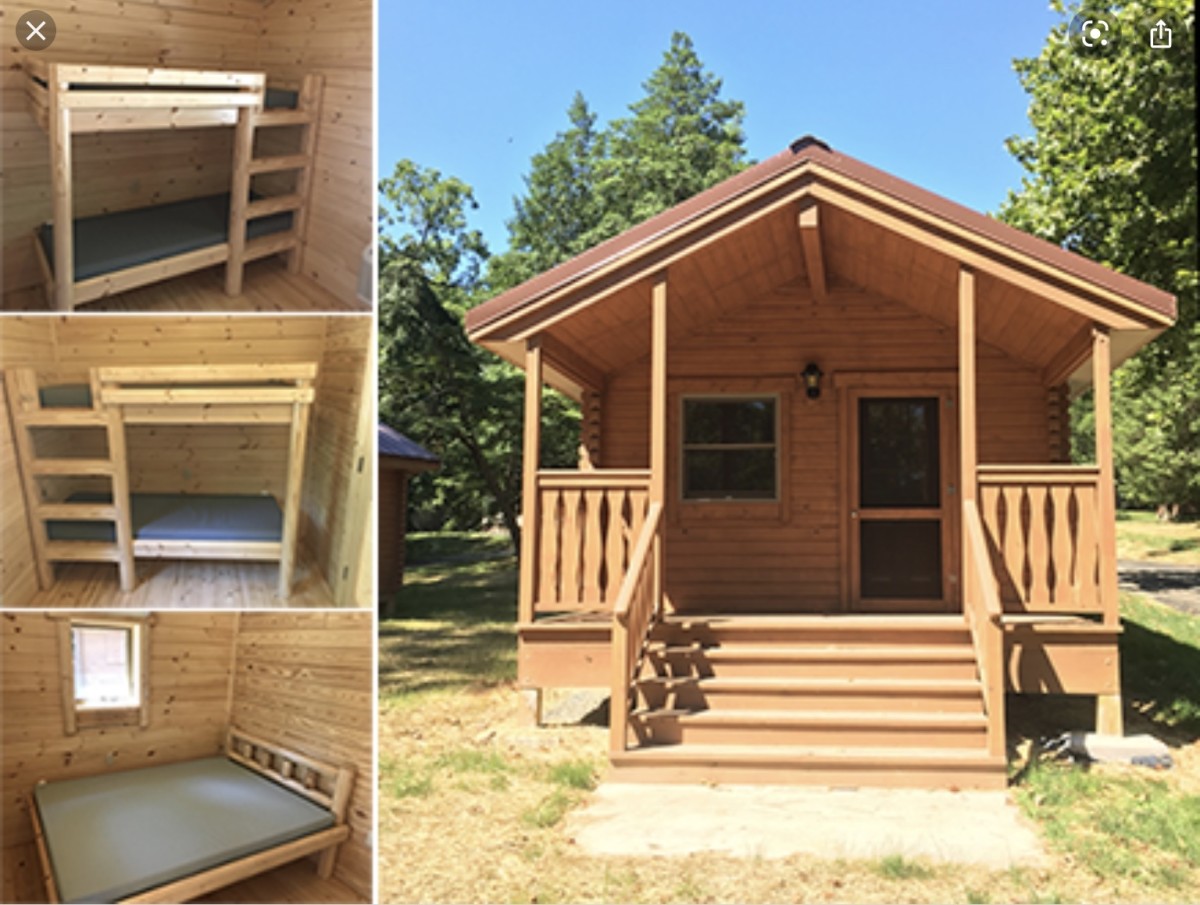BugOutBags -Go Bags
Bug Out Bag Basics
Bug Out Bags - Go Bags
Unless you have been living on a desert island in the South Pacific, you know that we live in turbulent and dangerous times. The economy is a roller coaster, just like 1929. There are a significant number of strong earthquakes and volcanic eruptions occurring all over the planet. Hurricanes and super-storms are devastating our coastal cities. Our food sources are dwindling and we are only 1 or 2 droughts away from mass starvation. War and terrorism permeates our society unlike any time in history. The governments of the world have become so corrupt that they are on a path to societal destruction. Global Tyranny is becoming a reality as police forces become militarized and laws are passed stripping you of more and more freedom.
What do you do to protect yourself and your family? Are you alone in your quest for survival? Is it better to go it alone or is their safety in numbers? Will you have enough food and water to survive? Will you need a gun or a weapon to defend yourself and your family? Do you stay put or bug out? What do I need to survive? In this article,
I will try to answer these questions and more.
Source
What Will I Need For My Bag?
Catastrophes happen. You never know when one will occur (or at least within days for hurricanes). Wars break out. Terrorism strikes at any time. The economy can crash without warning. How do I prepare for unexpected emergencies?
Well. if you watched National Geographic Channel's, "Doomsday Preppers", you were expected to believe that these people are radical extremists who are bent on preparing for the end or the world and in so doing, prepare for just one event. That is not realistic prepping. National Geographic wanted them to look crazy. True preppers do not prepare for only one event. They are not the extremist nuts that NG portrayed them to be. They are everyday people like you and I, just concerned about preparing for emergencies.
Prepping is something we do everyday. When you shop for your families food for the week, you are prepping. When you do preventative maintenance you are prepping, When you are packing for vacation or a trip, you are prepping. Prepping doesn't have to be stressful, it should be a fun learning experience.
First things first. When you start your prepping journey you need to thing about what you are preparing for. I tell people frequently, prepare for everything. DO NOT just prepare for a 10.0 Earthquake. DO NOT just prepare for the an X-class solar Flare. DO NOT just prepare for the Economic collapse. You need to think in larger terms. You need to learn that anything can happen at any time, with little or no notice. The 1st thing I suggest doing is to pack a bug-out bag for every member of your family. A bug-out bag should be light enough to carry for each member. Obviously an child's back will not need as much as an adult's bag, but just remember, you may have to carry this bag for many miles in certain circumstances so do not make it too heavy.
A bug-out bag should weight between 20-40lbs, depending on your strength. I suggest practicing by hiking with a a full bag to test what you can handle. The bags should be stored somewhere that you can quickly grab them and go on a moments notice. I suggest a Military grade bag. Military grade rucks are made to take a beating and store a lot of stuff. This is not for a camping trip, it is for your survival and it could mean humping it for days, weeks, months or longer.
A few things should be taken into account when deciding what should go into your bag:
1. You geographic location. Do you live in the north or south? Do you live in the plains, the mountains or the desert? Do you live in the city, suburbia or in the sticks? This means that your bag may need to be slightly different than someone in a different geographic location?
2. What season of the year is it? If it is Winter, you may need to carry extra items for warmth. If it is Summer, you may need to carry extra water.
3. Is the bag for an adult or a child? If you are carrying a bag for yourself and have children, you may have to carry extra items. A child's bag should be light and only include food and basic necessities, whereas an adults should include things like Medical kits, weapons. fire starters, etc, which will make it weigh more. Obviously, your many items, such as Medical Kits should have enough for yourself and your children. If there are multiple adults in your party, you can split up the extras for the children between you.
4. Is this Bug-Out bag for general purpose or for your car. There are obvious differences between what you should use for general "Bugging Out" vs something for your vehicle. A vehicle bag should really be simple and used for emergencies such as breaking down, getting into an accident and similar unfortunate events. Although some people keep full bags in their vehicles, that is a matter of preference and should be decided on at your discretion.
What should I put in a basic general purpose Bug-Out Bag?
The following Items are a must for every bag:
1. Water Filtration System. Lets face the facts, no one can survive without water. Depending on the time of year and your location, you may only have hours or you could last up to 5 days before you are dead. Water is so important that it is the number one provision that you should be prudent about. We take water for granted because we either have wells or get our water from the local municipality. This is the one thing you should not skimp out on. There are streams, rivers, ponds and lakes all over most of the country and most of them are not drinkable. If the power goes out, where will the water come from? Water filtration is a MUST.
There are many sources of filtration out there but you have to remember that we need to be practical and think lightweight for a Bug-out bag. Although I think the stainless Berkey systems are great, they are not practical for your bag as they are heavy and bulky. I suggest either a Life Straw or a small pump device. My personal preference is a ceramic filter type as they are easy to clean and the filters lasts a while. Unfortunately, the downside is that they clog easier and are a little slower at filtering the water, but they can filter the smallest particles, including viruses, and chemicals. Be sure to consider the number of gallons that they can filter. I would not suggest a Life Straw for a family, but if you pack one in everyone's bag, that may be sufficient. Unfortunately, a Life Straw will not fill your canteen or be practical for filling a pot.
2. Survival Knife. This is another one of the most important items for your Bug-Out Bag. Without a survival knife, you might as well forget about trying to survive, The right survival knife can mean life and death. You can carry it on your LBE (Load Bearing Equipment) wear it on your belt, or strapped to your leg or put it in your bag, I don't suggest putting it inside your bag as you may have to ditch your bag and you don't want to be without your knife. I keep mine on the outside of my bag and plan on putting it on my belt or LBE.
Choosing the right knife is as important as the knife itself. Your knife is a multi-tool. It is a personal defense weapon, a cutting tool, a chopping tool, a sharpening tool, a pick, an anchor, a spear, and much more. With a survival, size does matter. Too small and you may not be able to chop, Too long and it become cumbersome and impractical. I suggest a blade no shorter than 4 inches and no longer the 8 inches. The knife should be a full tang. This means that the knife blade and handle should should be one piece. If you you should need to use the knife for chopping, only a full tang will be able to handle the force of chopping. The knife should be well balanced and have a comfortable handle. The type of steel blade you prefer should be researched based on factors that are important to you. Different types of steel are practical for different purposes and maintenance may vary between different types of steel.
It is also important to have a practical sheath for your knife. The sheath should cover the entire blade so avoid damaging the blade, cutting yourself or someone around you, and to prevent the blade from rusting. It should be comfortable and easy to carry. It should have a belt loop and depending on length, it may need a lower strap to keep it from bouncing around.
The knife should be a knife and not a compass or a storage compartment, Some cheap knives are sold with compass on the handle and storage inside the handle for matches and string. Let me say this, after using the knife for chopping, the 50 cent compass will likely be broken and if you where working hard, the handle would have broken from the blade since it is not a full tang. My suggestion, let your knife be a knife.
There are many survival knives out there. My favorites are military grade since they are made to take abuse. The US Army or Marine KBARs are in my opinion, the best survival knives ever made and obviously proven. There are other great survival knives out there, but you need to do your research and choose the right survival knife for you.
3. Medical supplies. You can either put one together yourself or buy a pre-assembled kit that you can put in your bag. It should include: band aids, anti-bacterial ointment, gauze, small medical scissors, rubbing alcohol, pain reliever, medical thread and suture needles, Iodine and women's menstrual pads, which can serve several purposes. I also suggest 1 or 2 bandannas which have multiple purposes as well. This medical kit should be enough for you and each child in your care for at least 30 days.
4. Lightweight Food Packs for at least 3 days or more. The human body can endure long periods without food. Obviously, this depends on a persons' health, weight, physical endurance and the amount of energy that they will are expending. A sick person may only last a week, but a healthy person may last a month or more. Unfortunately, being realistic, you cannot expect to carry a week's worth of food in your bug-out bag. 1st, it would take up your entire bag, it would weigh so much you wouldn't be able to carry it very long.
When I was in the Army, They would make us carry boxes of MREs from the distribution point to our positions. Just 12 MREs in a box weighs 22lbs. That is 4 days worth of food. In the field, the reality was, it was a week's worth of food since you would only be able to eat 1-2 meals a day. Even 4 days is a lot of weight. With all of the other stuff in your bag, do you have the capacity to carry even 4 days worth?
I suggest lightweight hiker's dry food packs and certain energy bars, no more than 15lbs or you will regret it. You need to learn to hunt and fish for sustenance. It is the only way to truly be food independent. Your food cache will eventually run out and if you don't know how to hunt and fish, you will be at a major disadvantage. Additionally, people will be out to attack and possibly kill you for your food. knowledge is more important than dependence.
5. Fishing String, Hooks, and Sinkers. This is self explanatory and expands upon the prior items. You need sustenance and fish is a great source of protein and like it or not, you will eat it if your life depends on it. Get out there and learn to fish while it's still legal. Learn to gut and scale the fish. Fishing is a great pass time and going with a pro will be the best thing you can do to improve your survivability. You don't necessarily need a pole because even a good stick will work, but having some string and hooks is a must for fishing. Spear fishing is very difficult and takes a lot of skill. It may not be productive and you can expend more energy doing it than it is worth. Some will suggest rubber worms and certain lures, but you will eventually lose them. Learn to find live bait, grubs, worms, and certain bugs. It is always better to utilize what Mother Nature has already provided you than to rely on man-made items.
6. A Map of your local area and a Compass. Maps of your local area are indispensable. They are the key to getting from point A to point B without detection. During all out panic, the best route of travel is to stay away from populated areas since those who have not will want what you have. If you pre-planned a Bug-Out location, you map may be the only way to get there safely. You need a terrain map and street maps (with railroads) for every location between where your home is to where your Bug-Out location is or where ever else you may be trying to get to.
A terrain map won't do you any good if your don't have a compass and training on how to plot a course. I suggest training on how to plot a position and a course. Unfortunately, learning to plot and properly use a map and compass takes lots of practice. It is not something you can learn on the fly. I suggest taking courses on this and get hands on experience. It is not only a great learning experience, but it is fun, sort of like hiking.
Choosing a compass is not a the easiest task either. There are numerous brands out there on the market. Personal preference is somewhat acceptable in some cases, but not all compasses are created equal. My suggestion is a lensatic compass. I am partial to only 1 compass, a military grade 3H Tritium Compass. They are what the US military use and they cost about $70.00 on the web. Cammenga is the only brand to trust in Tritium as they are the official manufacturer of the US military compass. Why Tritium? Because tritium will not go dark at night. Sometimes, the best time to maneuver is at night. Only Tritium will allow you to navigate in the dark. Think of it as a battery operated compass, However, the battery doesn't die. Don't trust any glow in the dark knockoffs because we all know what happens to those; they eventually go dark after an hour or so. Furthermore, the military grade tritium compasses are rugged, waterproof and very accurate.
7. Extra socks and tee-shirts. Clothing, although you may think this is important, is only relative to your environment. Extra pants and other articles of clothing will only weigh you down. Extra socks will prevent trench foot and other foot diseases. In chaotic times, you need to protect the only set of feet that you have. Who cares if your clothes are dirty or smelly when you are trying to survive? Extra T-shirts will help keep your body dry when you become unbearably sweaty and dirty. Clothing can easily be cleaned by hand in a river or stream when the need arises.
8. Para chord. It is strong; it is lightweight, and probably has more uses than anything in your bag. You can use it to make a hooch, a tourniquet, a booby-trap, a clothes line and anything else your mind can dream up. I suggest a minimum of 20' and not more than 100'.
9. A military grade Square Poncho. Forget rain suits and umbrellas. The Military grade poncho will be adequate for any weather conditions. It serves multiple purposes. Of course you have a poncho to keep the rain off of you, but it also serves as a shelter. This is where your para chord or some bungee chords come in handy. Furthermore, it can serve as a medical litter, a bag to carry things in, a cover to keep your gear dry or whatever else you can improvise.
10. Waterproof matches, a lighter and a manual strike style fire starter. Why three different types of fire starters? Because you never know how long you will be out there and you never know what the weather conditions will be. Almost all Preppers believe that it is imperative to have a manual strike type fire starter. They work at is great in most cases and environments. However, they are sometimes difficult to use and take practice, so learning to use them when the SHTF is not recommended. Furthermore, if it is winter, or it has rained a lot, you may find it difficult to get a fire started with one.
Having a lighter for times when you need a quick fire is certainly convenience. Obviously, lighters don't last forever, so it is important to use them sparingly. Water-proof matches also come in handy for those times when you need a quick fire. Again, matches are very limited so use them sparingly.
11. Hand-Crank Emergency Radio. I believe the best choice for an emergency radio is a crank style. Some will suggest a solar radio or just a regular radio with batteries. Battery operated radios are only good for so long. Once the batteries die, you need to replace them, which means carrying extras and eventually, you will run out of them,
Solar radios run well when you have light form the sun. What happens when you have a few days of rain and/or clouds? That is why crank power is the way to go. Someone can always crank it up to get a few hours power at a time. I suggest a radio that has emergency channels as well as weather stations and standard AM/FM channels as well. If you can find one with short wave 2 way capabilities it will help to serve dual functions.
12. Military Grade Canteen With Canteen Cooking Cup. A military grade canteen will last you through years of use. They are designed to take a beating and have special connections to allow you to drink with a gas mask on. The canteen cup holds the canteen and it comes with a carry pouch, specially designed for your LBE. The cup is aluminum and can be used to boil water, mix food, use as a bowl or a cup. It can serve as many field expedient purposes as you can concoct.
13. Weapon of Choice for Self-Defense and/or Hunting. Whether you are a Gun enthusiast, a Martial Arts, Expert, or a Pacifist, a weapon is a must. During a catastrophic event, war situation, economic collapse or any other serious situation, people are likely to be in a state of panic. In the United States, one only needs to look back to 9/11, Hurricane Katrina, Super Storm Sandy or the Ferguson Riots to see how chaotic things things can become. There is a very high chance of being attacked by violent individuals or gangs looking to steal and hurt and possibly kill. Furthermore, if you plan on laying out in the woods, although, rare, you could be in danger of being attacked by a bear, a pack of wolves, a pack of coyotes or mountain lion, obviously, dependent upon where in the country you live. Guns are by far the safest bet for security due to their longer range capability. Rifles, have the longest range and shotguns and pistols shorter range. Rifles and shotguns can be cumbersome and clumsy to carry and the ammunition weighs 2-3 times more than handgun ammunition.
Although, knives are weapons and you will probably have one anyhow, the user should be an expert in knife fighting and/or martial arts to use one. Someone who is an expert in certain grappling style martial arts, like Aikido or Jujitsu can easily disarm the average knife wielding threat.
If you are uncomfortable with a Firearm, there are other alternatives, such as a bow or crossbow, a baton, stun gun, taser, pepper spray, bladed weapons, throwing stars and knives and even rocks. In all situations, your weapon should not be in your bag, but on your belt of in your pocket. Bags can be robbed from you so your weapon should be easily accessible even when you bag is a cache or vehicle.
Since most attacks happen close up, the best bet is a person well versed in a self defense style martial arts form. Martial Arts should be chosen based on one thing: self defense. If the martial art prides itself on competition and charges high prices for the next belt, it is not a true martial art. Black belts should be very difficult to achieve and should never be given to children under 17 years old. Most forms of Tae Kwon Do cater to children as do many forms of Karate. These styles were invented by the farmers and laymen of the time to fight off thieves and other criminal types. Kung Fu was invented by Chinese Buddhist monks to protect themselves from robbers and other criminal types. There are many forms that resemble the movements of animals and insects. Bruce Lee created a new form called Jeet Kune Do (the Way of the Intercepting Fist), which he felt was the most practical real world fighting method specially designed to win a street fight, without using necessary forms. Jujitsu, Judo and Aikido was used by the Samurai for fighting war mano e mano with and without swords. Ninjitsu was used for assassinations and focused primarily on weapons. Krav Maga was created for the Israeli Defense Force for hand to hand combat and is one of the fastest growing martial arts in Europe and the US next to Brazilian Jujitsu. There are other martial arts and I encourage you to research the best method for you. Nothing may be more important to save you own life than your own arms and legs.
14. Toiletries/paper. This is what it is. Is a toothbrush and floss necessary? No. If may be convenient, but not necessary. A small travel bar of soap, a razor, and toilet paper is probably necessary if you are a man and instead of the razor, tampons for women. If it is winter or fall, a soft leaf may not be there for you. Sure we can go a week or more without soap and TP, but it is one convenience you might just want to have if you are not a hardcore survivalist.
15. Handheld two way radios for each member of your group. Handheld radios speak for themselves. If you are in with another person, communication is a must. Mobile devices will likely be unusable. As the past unfortunate events prove, cell service went down. Since you may not always be able to be side by side or within a few feet of each other, you should have some sort of effective electronic form of communication. Even if you a alone, scanning the channels may save you life if you are in need of help. Most people are choosing to purchase Ham radios, VHF Radios and CB radios. Do your research, take classes, if necessary, get your license, but definitely make sure you have some sort of handheld two-way radio.
16. Whistle. A whistle is simple, light and effective. If you bug out, will you be bugging out in the sticks? If so, there is a chance that you could become disoriented, lost or even immobilized. A whistle can certainly draw attention to your position, when you need help. If you are attacked, blowing a whistle could make your attacker flee or allow help to find your location. This is something that should be worn around your neck and not in your bag.
17. Emergency Blanket. An emergency blanket can have several uses. The most obvious is as a blanket to keep you warm. Sometimes called space blankets, they are made super light space saving materials and useful for space travel. They are made of of Mylar which is reflective to reduce bodily heat loss by reflecting heat back. They can also be used to reflect heat away from you if you are in a very hot sunny area. They can also be used in a shelter. They are worth adding to your bag and weight very little. Even your children should carry this.
18. Flashlight. Light is important in a "bug-out" situation. Flashlights have the obvious uses, but can also be used as signal devices and some can cause a blinding strobe. A good flashlight is worth the money. 200-500 Lumens is the way to go if you want a flashlight that can serve most purposes.
19. Needle Nose Pliers. Whether you are making a shelter, pulling a hook from the throat of a fish, skinning a squirrel, tinkering with a machine, making a trap or doing an innumerable other tasks, a good set of needle nose pliers will always come in handy. If you choose to carry a Leatherman multi-tool, you get the soup to nuts. If you do buy one, be sure to not get the cheap Chinese made garbage, get the real Leatherman. Bear in mind, a Leatherman is a supplemental knife/tool and should not be counted on as your primary survival knife.
20. Individually prescribed medications. If you have ailments, diseases, illnesses or injuries that require medication in order for you to function or survive, make sure you always keep at least some in your bag so that you can function when Bugging out. Obviously, it is not practical to keep all of your medication in the bag as medication can go bad, but a one week supply in your bag that you can rotate out every few months would serve you well. If you have extra pain killers, I suggest keeping some in your bag as well just in case injury occurs which on the move.
21. Lightweight guide on local edible plants. This is not a must if you already know how to forage for food in the nature. A large bulky book is not convenient due to weight, but there are many pamphlet style books that you can purchase for plants in your local area. Books that cover all sorts of plants in many areas is really just a waste of space and energy. If you haven't already done so, take classes on local edible plants and foraging.
22. Cash (if it is still usable). Cash will likely be usable during certain situations. During a 2 week or less event, it will likely get you things that you need. If the event last more than that, or the dollar crashes, cash will not be worth the paper it is printed on. Having at least a few hundred dollars would be wise. The more the better; however, if you are carrying money, it would be wise to hide your money in different places, whether you have a money belt, secret pockets, cache areas or some other hiding place. You don't want to be robbed and loose all of your cash at once.
23. Signal Mirror. A signal mirror is a plus to have because it serves a few purposes. It is a mirror, so it can help with your personal hygiene. You can use them to communicate via signals or is you get lost or need help, you can use them to signal for help.
24. Duct Tape. You name it, Duct tape can help, building a shelter, ripped clothing, medical tape, patch a shoe, handcuff someone or whatever else you can dream up, duct tape is essential.
25.Monocular/Binoculars. Depending on the situation, a good pair of monoculars/binoculars can be quite helpful. You can use them to spot game, search for friendly or enemy personnel, scout forward areas and the glass can be used to start fires.
26. Bandanna. As simple as these are, they have as many uses as you can envision. I have seen them used as cooling rags, tourniquets, field dressing, napkin, dust/cold weather mask and many other things. They are light and barely take up room in your bag so a 3 pack is the way to go.
In addition, I would make certain to have a Military grade, Load Bearing Vest (LBV)/equipment (LBE). With LBE, you can carry your canteens, compass, survival knife, ammunition and dump pouch (if needed), Pepper Spray (if needed) and much more, without having to take up space in your bug-out bag.
There are certainly main other things you can put in a bug-out bag, but too much can be a hindrance if you are on the move. However, it is always easier to unpack and ditch items when you need to. That is why it is important to prioritize which items to carry and how to organize the bag. I suggest that all of the basic necessities go in the same location. Other items should be packed in other pockets based on scenario and need; that way it is easy to ditch the items that you don't need.
These are other items that may be beneficial, but are not a necessary,
-Small Bolt cutters (heavy item)
-Rechargeable Batteries and solar charger for batteries and devices
-Bear Repellent
-Tomahawk
-Machete
-Bungee chords
-pencil, pad
-micro hammock
-Military grade poncho liner (Woobie blanket)
Small lightweight sleeping bag if during colder temps
-Micro torch for wetter climates
-lightweight tent stakes to make hooch out of poncho
-extra pants. I suggest Tactical pants for durability
-Chem-lights.
-Handbook on Edible plants in your surrounding area
-Anti-Diarrhea Meds
-Sewing Kit
-Zip-Lock Bags
-Plastic Bags
-Hand Sanitizer
-E-Tool
-Insect Repellent


